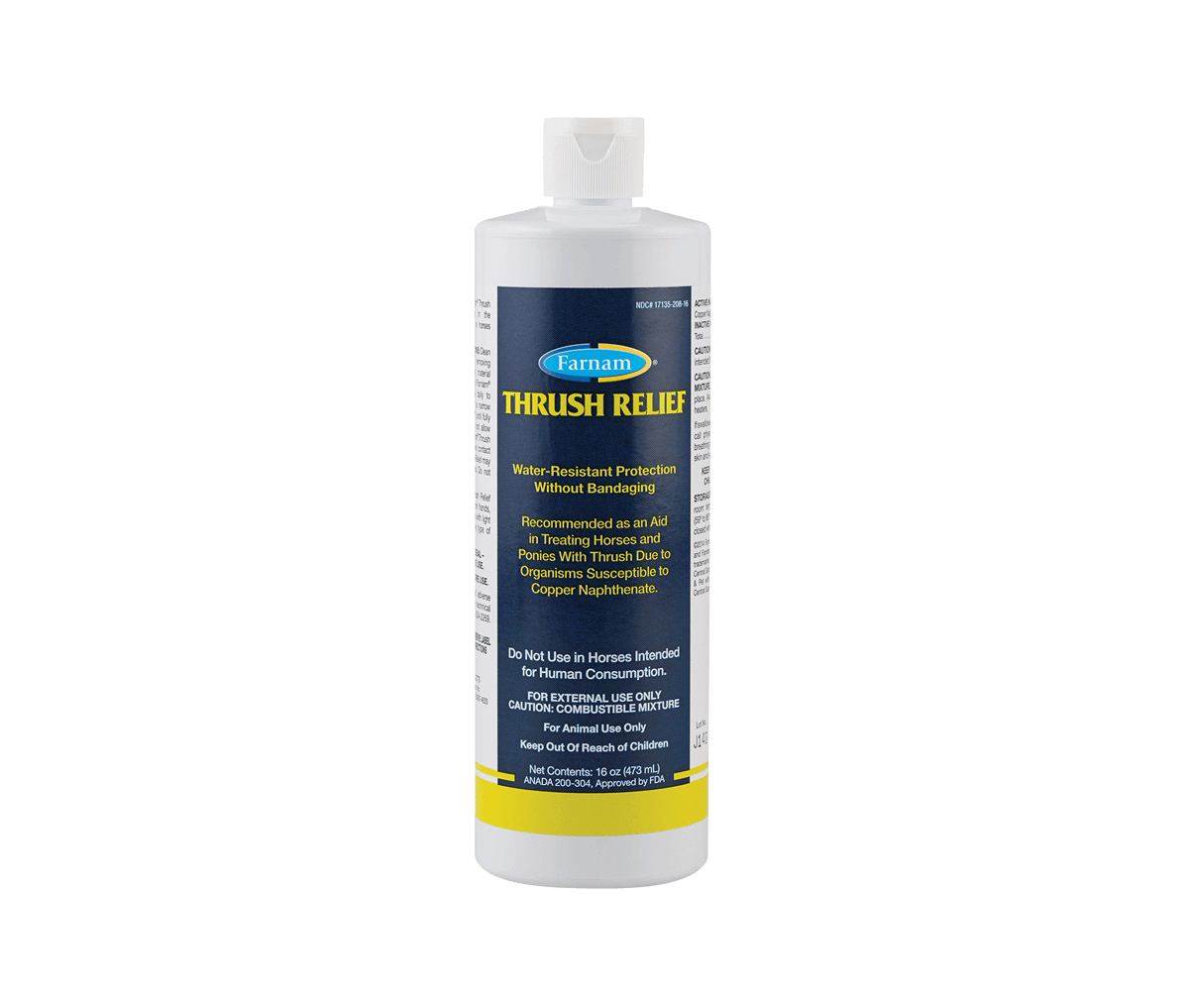Do you Know the Lowdown on Thrush?

Setting the Stage
Once thrush sets in, there is typically an offensive-smelling black material on and in the frog of the foot, as well as the sulci. Left untreated, thrush can affect the sensitive layers of the hoof, and possibly even result in lameness.
Effective Management
Before you head for the tack store to pick up a bottle of thrush treatment, call your farrier. In order to manage the problem, you must be able to get that product where it needs to go.
"If the frog has succumbed to thrush, you need to debride the loose flaps and cut away the necrotic areas. If you don't do this, the topical treatment can't penetrate the area to kill the remaining microbes. When your farrier trims the area, the bulk of the microbes will be removed, but you still need that topical treatment to finish it," explains Travis Burns, a Certified Journeyman Farrier, who is a Lecturer and Chief of Farrier Services at the Virginia-Maryland Regional College of Veterinary Medicine.
"The first step is debriding the frog to a healthy-appearing margin and then using a product made to treat thrush," says Burns, noting that there are a number of commercial products on the market from reliable manufacturers that work well. (Don't rely on home remedies or Internet advice such as using bleach or formaldehyde to treat thrush!)
Read directions carefully and don't allow thrush products to come in contact with skin or hair--yours or the horse's. It's always a good idea to talk to your veterinarian if your horse has a thrush infection, just to be sure you are using the right product(s) and treating it properly.
Be sure to treat the affected area long enough to completely clear up the problem.
before you head for the tack store to pick up a bottle of thrush treatment, call your farrier.
Avoiding Thrush
"It has been proven that most of the microbes that cause thrush are anaerobic, meaning they live only in environments without oxygen," says Burns, explaining that this is why picking out the feet regularly to expose the bottom of the foot to UV light and air is indicated. Doing so exposes the area to oxygen and kills those microbes.
In most cases, thrush is basically a management concern and can be prevented by conscientious horse-keeping.
Even in horses that are predisposed to thrush, such as those with clubby feet or contracted heels, you can limit thrush.
- Pick feet out daily
- Inspect carefully for any problems developing
- Provide clean, dry bedding
- Keep hooves trimmed regularly by a competent hoof care provider
If you go too long between farrier visits, your horse's frog will have more flaps, folds and pockets that can trap debris and microbes. The foot will also be less balanced, which may negatively impact movement. This is another reason for scheduling a regular visit, as well as cleaning out the feet each day.
"If you see or smell signs of thrush, early treatment is always better than trying to deal with it down the road," says Burns. "Thrush isn't a complicated thing, but it does put an owner to work to eliminate it."
“Thrush Tip #1: Regular Hoof Care Helps Prevent Thrush
Improper trimming, going too long between farrier visits, and not regularly cleaning out the feet will contribute to thrush, which is caused by anaerobic bacteria and dark, moist conditions. Pick out those hooves every day and keep your horse on a regular schedule with your hoof care provider. This is important even for horses that aren't ridden--including that old retired gelding in the pasture and the pony you got as a companion animal.
Thrush Tip #2: Exercise Important in Avoiding Thrush
Horses are made to move. Regular exercise can also help prevent and treat thrush, even for horses that live in pristine environments. Regular exercise promotes blood flow, which is essential for healthy feet. Another reason to get your horse out of that stall as much as possible.
Life with Horses Newsletter
Sign up now to stay connected with free helpful horse care tips, product updates, and special offers.
Featured Products
Related Articles
Get a Leg Up with the Right Hoof Care Products
Without four good feet to stand on, your horse is in trouble. No matter how well bred, athletic or personable he may be, he’ll never reach his full potential if his feet can’t hold up. While genetics do arguably play a role in equine soundness and foot quality, conscientious owners will also do everything they can to give their horses the best hoof care...
Feeding the Hoof
No matter what breed your horse is, no matter how young or old he may be, no matter what style of riding you enjoy, it all comes down to soundness. You won’t get far without it. It might be that poor feet or lameness concerns are limiting your horse’s potential, or even interrupting your riding schedule. Or perhaps your horse isn’t having trouble now, but you have serious riding goals and don’t want anything to interfere. Any of these situations are reason enough to stop and ask yourself: “Am I doing everything possible to ensure the health and soundness of my horse? Can I do anything more to help strengthen his foundation?”...






